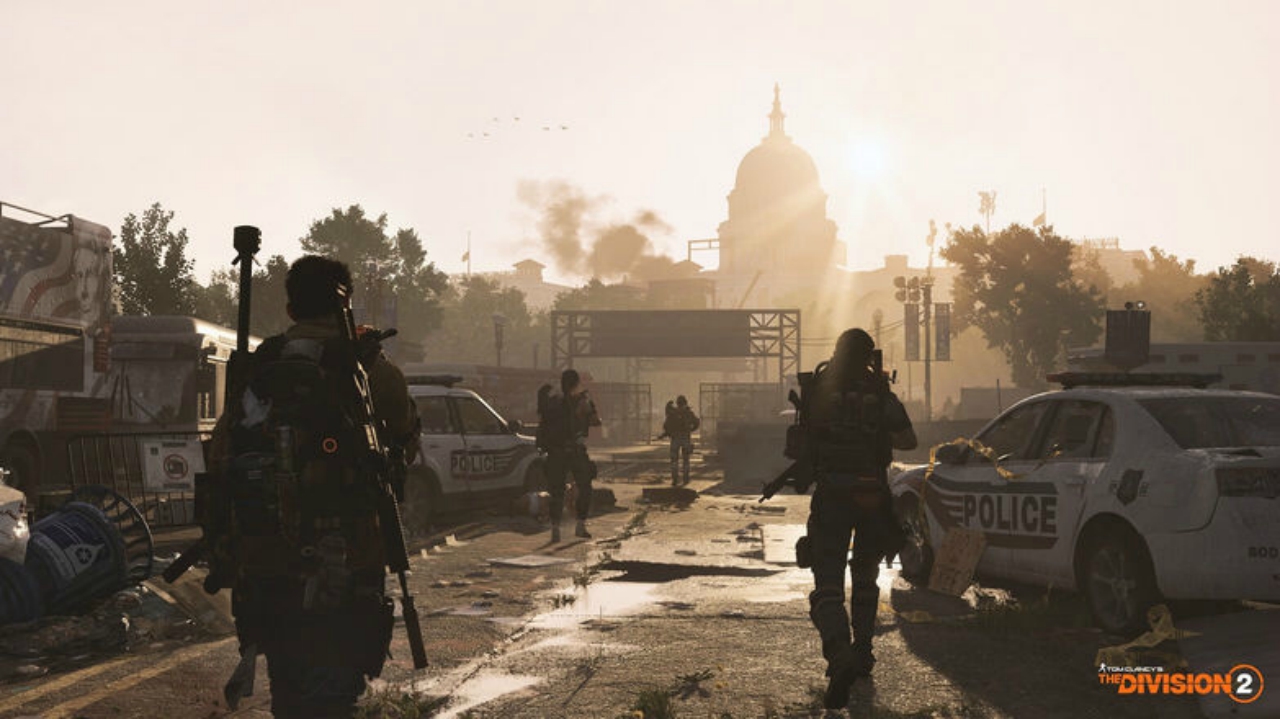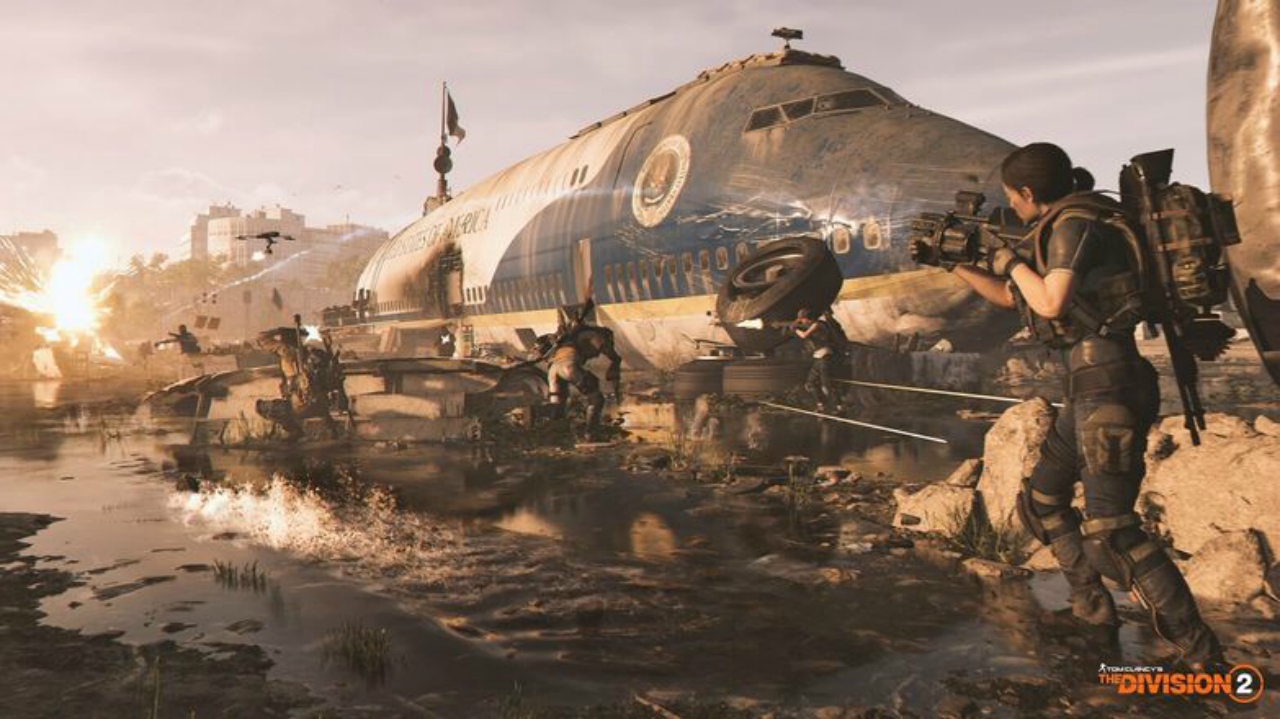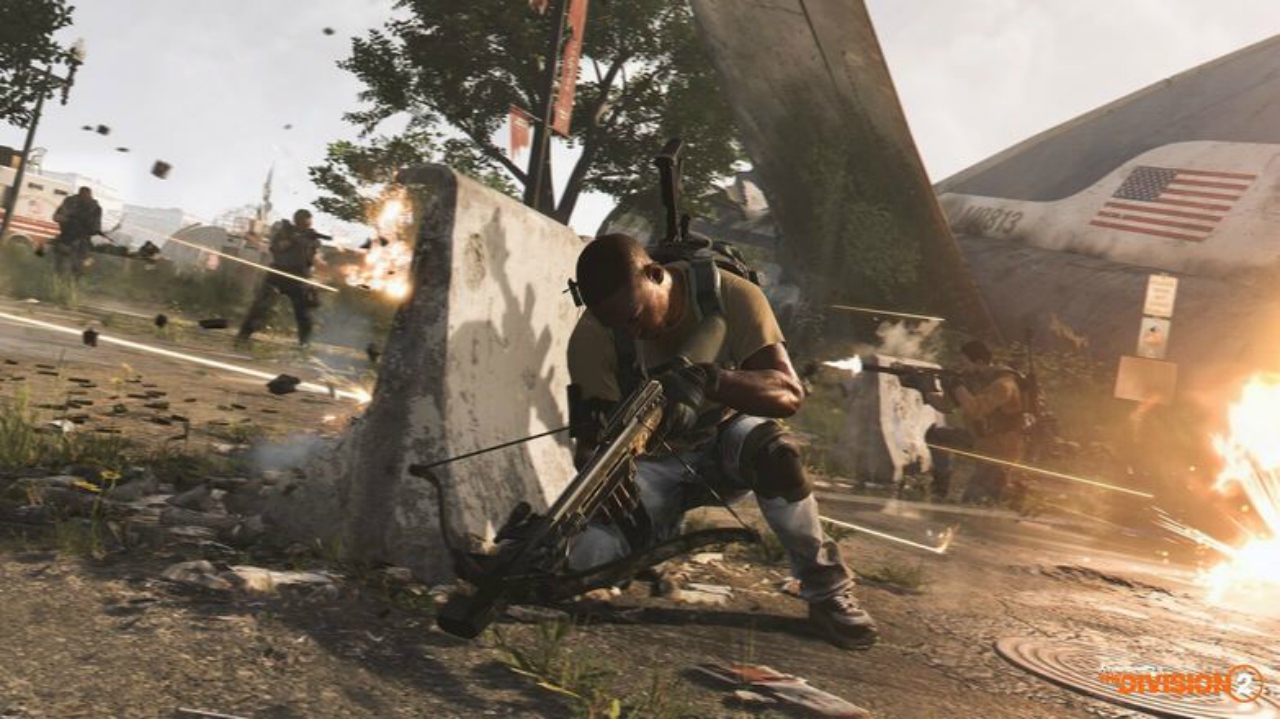Tom Clancy’s The Division 2 review
In many ways, the universe created by the late Tom Clancy is as much a fantasy land as Middle-earth or Tamriel. It’s a world where international law and protocol bends for whatever story is being told at the time, where all-American heroes like Jack Ryan and John Clarke hold aloft the Stars ‘n’ Stripes like Aragorn brandishing Anduril. It’s a universe of megalomaniac villains and highly-trained anti-heroes lent false realism by its contemporary setting.
Not a single syllable of that was meant as a criticism, by the way. Tom Clancy’s words have thrilled and inspired several generations of readers and movie-goers, and now the worlds he built brick-by-brick are home to some of the greatest and most well-liked video game franchises in recent history: Rainbow Six, Ghost Recon, Splinter Cell…

While 2016’s The Division was no great departure from Clancy’s material, it was a step in a fresh direction for Ubisoft. It’s no secret that their open-world games follow a comfortably familiar checklist formula, throwing you into a conflicted game-world filled with things to do, and saturated with minutiae. Even the Assassin’s Creed games have evolved into open-world behemoths that more closely resemble RPGs than action games. The Division was in almost every way a bridge between what Ubisoft were and what they are aspiring to be. It was a game that attempted to create a compelling solo adventure set in Tom Clancy’s grimly-likeable universe, with looks akin to Ghost Recon and the mechanics of an RPG. And it mostly worked too. Mostly.
Jump forward 3 years, and The Division 2 is hitting the market in a much better condition and a much better position. It’s not perfect, but it’s about as close to it at launch as I’ve seen from a game in this genre. As with its predecessor, the biggest challenge for Ubisoft is to tell a compelling story while at the same time letting your actions as the player define your experience. It’s a balance they still don’t get right in the sequel, but one which at the same time kind of does its job. As with the last game, the over-arching story of a virus-ravaged US at the mercy of a bunch of newborn terrorist groups succeeds in giving just enough framework to hang the concept on, but little else.
Ubisoft have taken pains to reinforce that this is not a political game, though many will take it as such. Using the White House as a base of operations is hardly subtle, but then neither was blowing it up in Independence Day – either way, it’s less likely a political or even symbolic choice. It’s more likely just because it’s cool. That said, it’s hard to separate a game like this from the politics of the nation in which it’s set – but this is a gunsmoke fantasy about “good” Americans saving America from “bad” Americans and as such, taking it seriously is wildly missing the point.
You are an Agent of the Strategic Homeland Division, an elite sleeper operative trained in secret and embedded into society, to be activated only when the shit hits the fan so hard it breaks the rotor. Which was 7 months ago, when contaminated dollar bills spread a deadly strain of influenza called “Green Poison” or the “Dollar Flu”. It’s never quite made clear how much of the US is affected, but New York is ground zero and the virus has at least reached the Capital, as The Division 2 takes place in Washington DC.
Your nameless, voiceless protagonist arrives in the Capital as all-out war is erupting between what remains of the Joint Task Force, the beleaguered, thinly-stretched SHD, and the violent collectives using the Collapse as a means to get rich and establish their own brands of rule. As a plot it’s a bit OTT, once again pushing the idea that if America was in such a state, the rest of the world would be so useless as to be no help at all. The UN doesn’t seem to exist in this world, and it’s all a bit silly when you examine it too closely. It’s also far too loose a plot, giving very little reason for what’s expected of you and leaving sparse room for proper characterisation. What’s here is well presented and well acted, but I realised after about hour 15 that I had no real idea why I was doing what I was doing. It’s testament to the gameplay that I also didn’t really care.
Atmosphere is all in this case, and The Division 2 fairly hums with it. Every time you head out into the city, Ubisoft want you to feel a sense of gallantry more in keeping with something like The Witcher. You are a good guy, a beacon of light and goodness in the gathering dark, and The Division 2 never pretends otherwise. There are no moral choices beyond whether or not you shoot the stag that stands in the road up ahead, a ghostly apparition that acts as a stark reminder that humanity is on its knees.

Those of you watching from the sidelines would be forgiven for thinking that The Division 2 is a shooter. It looks like one, after all, with its cover mechanics and roadie running, but it’s actually a thoroughbred RPG. You’re not firing bullets, you’re firing numbers, and they’re crunching the other numbers that your enemies are wearing instead of armour. See that can of fuel you can shoot? Made of numbers. That grenade? Made of numbers. That group of allies who just rocked up to help you out? Numbers, numbers, numbers.
Enemies are less spongey than before, and you can now shoot the armour off tougher opponents to expose weak spots and exploit their gear. For example, medics can be electrocuted by their defibrillators, while fire-throwers can be incinerated by their own fuel tanks. Your defence and damage is governed by the stats on your gear: backpack, mask, gloves, body armour, and kneepads can all be swapped, modded and upgraded to improve your survivability, while cosmetic vanity items alter your clothing. You can even alter hair, beards, camo, and tattoos when you’ve unlocked the appropriate vendor.
To compensate for the improved TTK (time to kill), enemies are tougher and much more aggressive. The only way to win fights is to use the environment, stay in cover, and always be improving your build. There are a number of perks to make you hardier, including increased inventory space, extra XP from headshots and increased grenade and armour kit capacity. You also have 8 core abilities that employ high-end tech to tip the balance of battle in your favour.

You can unlock them in any order, but it will take around 15 hours on a chilled playthrough to unlock them all. They include a turret that can be adapted to shoot flame or snipe with high-calibre rounds, a hive of nanobots that can repair ally armour or harangue the enemy, a pulse beacon to highlight enemies and items of interest, and a ballistic shield. Each skill is incredibly useful, and the Agent who combines the right skill variants at the right time will live much longer. Enemies will work together, flank you, charge you, fall back, spring traps and employ gadgets of their own, and to succeed you’ll need every skill at your disposal. AI is occasionally inconsistent, as enemies become indecisive, get stuck on the scenery, or suddenly decide to stand in the open and get killed. Sometimes they’ll sense your presence with an almost supernatural talent, too, but on the whole it works very well.
A classic war of attrition set up forms the basis for your sojourns into DC. Various enemy factions have established beachheads and control points throughout the city, and it’s your job to disrupt and destabilise them while at the same time upgrading and improving a handful of settlements where the citizens of the Capital are attempting to restore civilisation.
The map is huge, and at first seems like the standard Ubisoft tick-list. The difference here is how organic it all feels, and how everything you do feeds into the story, lore and narrative. The missions might ultimately follow a formula of shooting things until the boss appears and then shooting them too, but the various objectives within the missions, as well as the variety of both indoor and outdoor locations, mean that each one feels different enough to the last that you don’t become numbed by them. Only two or three of them stand out as truly memorable, but I never once felt bored or tired of The Division 2’s 35-hour campaign.

I say 35 hours, but that’s not just story missions; that’s also taking into account a wealth of side content. Smaller, more bite-sized missions open up as you progress, but there are also control points to capture and bounties to hunt. You might stumble upon a public execution you’ll feel compelled to stop, a contaminated area to ransack, or militia shooting ranges where you can show off your skills. Then there are convoys to either disrupt or protect, and propaganda broadcasts to silence. On top of all this, you could just wander the streets raiding buildings for supplies to turn in at your settlements, thus completing projects in return for blueprints.
Crafting is robust and easy to get to grips with, as materials are everywhere and blueprints are in abundance. You’ll recruit someone towards the latter half of the campaign who’ll also allow you to recalibrate guns and gear, essentially carrying your favourite skills over to other items or even re-rolling stats altogether.
When I say The Division 2 is feature-complete, I mean it. I’ve barely touched on the endgame content, and after 35 hours I’m still unlocking things to do and finding collectibles and secrets. Hidden bosses called Hunters carry over from a concept introduced in The Division 1, and killing them unlocks cosmetic masks to wear proudly as a sign of your victory, while two dungeon-like Strongholds offer a steep challenge with great rewards. A third is promised soon, along with a glut of free and paid content to keep the already impressive endgame ticking over.
You’ll choose a Specialisation at level 30, from a choice of 3: Survivalist, Sharpshooter and Demolitionist, and will gain access to higher “World Tiers” with new missions, objectives and enemies. And then you’ve got the Dark Zone, a more balanced, nuanced version of what came before that changes the entire atmosphere of the game as soon as you enter it and realise that now other players can hunt you, too. I haven’t spent a lot of time in there yet, but I will.
But what about the loot game? Well, it’s incredibly strong. Gear drops increase in efficacy based on the genre-standard colour-coded tier system, and there is a ton of it. What’s more is that it feels meaningful, and you’ll often spend several minutes mulling over the numbers. Should you go for high damage over increased accuracy, fast reload speed over stability? Should you focus on armour, health, or the various talents attributed to the high-tier equipment that can affect everything from skill power to vendor prices or armour regeneration rate and cooldowns. Consider that most gear can also be modded to further tweak your given build and then saved to loadouts and you’ll begin to get a picture of just how impressive The Division 2’s loot game really is.
Performance-wise, I’m happy though not blown away. It runs smoothly enough though never climbs much higher than 30fps on Xbox One X; although it never really drops more than a couple of frames either. I have experienced three crashes in 35 hours, but on all occasions I logged back in and was returned to the same group and mission inside of around two minutes. A couple of bugs have forced a suicide though. In one case I got stuck inside a building with no doors and in another I couldn’t follow my team into a new area and had to die to respawn on their position. Beyond that, I’ve seen a couple of visual glitches and hiccups, but nothing game-breaking.

Environments are highly detailed and dripping with atmosphere. Wildlife is everywhere from stags and deer to raccoons raiding trashcans, foxes chasing crows, and scurrying rats. And the dogs are in such abundance you wonder why no one is training them as assets. I’ve counted at least five different breeds as well, which is impressive in of itself considering how few enemy composites there are. Heaps of refuse, burned-out cars, shattered buildings, and bullet-shredded flags paint a picture of a capital in ruins, while the weather effects are just great, from driving rain that you can barely see through to night-time ash storms that swirl around patches of fire in the war-torn heart of the city. Texture pop-in might be an issue now and then, but Ubisoft and Massive know how to create an atmosphere and run with it.
I could go on and on, and have already, I know, but The Division 2 is just a superb experience, alone or with others. It’s an accomplished shooter, a deep RPG and a hugely satisfying looter all at once. It has a smattering of minor issues here and there, but besides maybe one serious contender (and I’ll let you decide which one), The Division 2 is without a doubt the best in its class.




